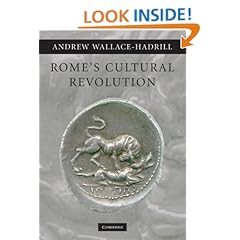
Peering from his hiding place in a corpse-strewn alley of 15th century Soissons, young Nicholas Hook watched in horror as his fellow English archers, surrendered by a treacherous nobleman for a pouch of coins then disarmed, are set upon by their French captors. First, their bow fingers are sliced off, something Hook had heard stories about in the short time he had spent with his company. But then they were grabbed by the hair, their heads wrenched back, and their eyes gouged from their sockets. Still the Frenchmen’s bloodlust was not sated. Drawing their daggers, the French men-at-arms castrated the screaming, blinded men and left them to bleed to death, writhing on the cobblestones of the square in front of the little church where they had sought refuge.
This scene (I have condensed it) reflects the sheer brutality of warfare during the Hundred Years War. I have read many books in which conquering armies sack cities but I have never experienced the savagery as explicitly as I did reading Cornwell’s description of the fall of Soissons in 1415.
There, men not only hacked each other to pieces with poleax, mace, and sword, but the victors used their own bodies to violate and rend dazed women and hollow-eyed children. Even priests and nuns were raped or disemboweled. The shockwaves of this massacre of mostly French citizens by French soldiers rocked all of Christendom. In fact, this transgression was pointed to as the reason the French were so resoundingly defeated at Agincourt a year later, October 25, 1415, on the feast day of St. Crispin and St. Crispian, the patron saints of the town of Soissons.
Nicholas Hook escapes the carnage, along with a young novice, Melisande, the bastard daughter of a wealthy French nobleman. The couple flee to Calais where Nicholas relates all he has seen to the English commander there. As one of the few survivors of the butchery at Soissons, Nicholas is then summoned to London to repeat his story to King Henry V. Afterwards, the king assigns him to the company of Sir John Cornewaille (sometimes spelled Cornwall).
Sir John Cornewaille was born in 1364 to a noble family. His father, also Sir John Cornewaille, had been in service to the Duke of Brittany. His mother was, purportedly, the niece of the Duke. Sir John (the younger) served Richard II in Scotland. Then, he fought for the Duke of Lancaster in Brittany and, later, King Henry IV. Sir John was made a Knight of The Garter in 1410 for his numerous acts of courage on the battlefield. King Henry IV even gave him Elizabeth Plantagenet, the Duchess of Exeter, daughter of the third surviving son of King Edward III , in marriage.
But, although he was a celebrated tournament champion as well as decorated soldier, Sir John was not the romanticized warrior that people often think of when the subject of knights and chivalry arise. His training speech, as related by Cornwell, would make a U.S. Marine drill sergeant proud:
“ …you rip their bellies open, shove blades in their eyes, slice their throats, cut off their bollocks, drive swords up their arses, tear out their gullets, gouge their livers, skewer their kidneys, I don’t care how you do it, so long as you kill them!”

Now English archers were lethal and Nicholas Hook was an exceptional archer. Hook could punch a fletched shaft through the throat of a crossbowman at a distance considered out-of-range by the average archer. But Sir John taught him to kill with poleax and dagger as well. As it turned out he would need all of these skills to survive the killing fields of Agincourt.
But first, Hook had to endure the withering siege of Harfleur, a small port on the coast of Normandy. There, Henry V’s army not only faced a defiant French garrison supported by determined townsfolk, but, as the siege dragged on and on, devastating disease and dysentery.
Again Cornwell’s gritty narrative engulfs you in the grinding depravations of the victims of the besieged town as well as the squalid existence of the archers and men-at-arms clamoring outside the crumbling walls.
Cornwell also introduces us to a quintessential villain, not a menacing Frenchman, but a stringy-haired English priest who uses his office to force himself on women and now casts a lecherous eye on Melisande. Each time this priest appeared, I would picture the balding priest with bulging, lascivious eyes who is groping a cackling, bulbous-breasted prostitute in the History Channel series, “The History of Sex”. This character was so well drawn, like all of Cornwell’s characters, that he actually made my skin crawl.
Of course the climax of the novel is the battle of Agincourt. The battle itself lasted for about three hours and Cornwell’s account of the slaughter that occurred in those three hours left me as emotionally drained as those unarmored archers who, after exhausting their supply of bodkins, struggled in the knee deep mud of that sodden wheat field to fight off French knights wielding shortened lances and spiked maces.
I had always heard that the English won the battle of Agincourt because of their archers with their famous long bows. But, actually, the archers depleted their arrow supply on the first French battle charge. The second wave was repulsed in hand to hand fighting along the entire English line, with archers discarding their bows and resorting to secondary weapons like poleaxes and mallets.
I must confess, now, although I have seen probably all of the Sharpe’s Rifles television series and have over a dozen of Bernard Cornwell’s books in my “to be read” stack, Agincourt: A Novel
is the first book by Cornwell that I have actually read. I have read hundreds of other novels featuring accounts of many of the ancient world’s most famous battles - some, like Cannae, with much higher death tolls than Agincourt. But I have never read a fictionalized account of battle more immersive than the struggle described by Cornwell in this novel.
For interesting videos about the story behind the book, check out my earlier post.








